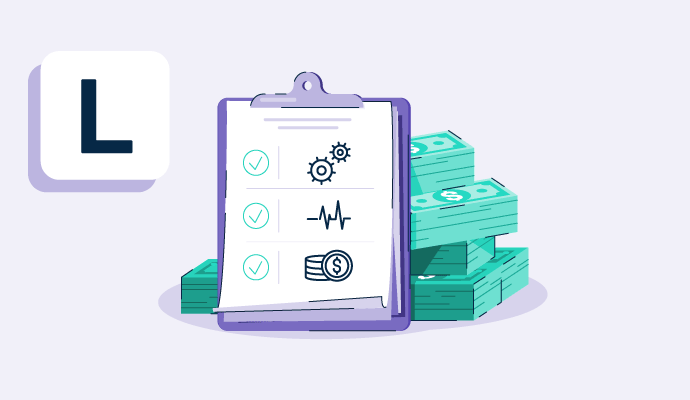What is loan servicing?
Loan servicing is the process of managing a borrower’s loan. It includes all administrative responsibilities the lender carries out during the repayment period.
Banks and financial institutions sometimes service their own loans, but they often hire services out to third-party vendors. Some specialize in a particular type of loan, commonly mortgage, student, or personal loans.
Lenders and loan servicers use loan servicing software for management and automation, which reduces errors and simplifies workflows. These platforms often include loan origination features or integrate with loan origination software to cover the loan’s entire lifecycle.
Basic elements of loan servicing
Loan servicing starts as soon as the lender disperses funds to the borrower. Some activities involved in loan servicing include:
- Sending statements. Borrowers receive monthly notifications about the payment amount, due date, and balance. With loan servicing software, companies produce these statements automatically.
- Collecting money. Loan servicers have to collect payments, typically once a month until the loan is paid. For a mortgage, this might include the loan principal, interest, taxes, and insurance. The servicers then forward that money to the appropriate people, such as tax collectors, banks, or insurance companies.
- Maintaining records. Keeping accurate records of payments and balances is in the best interest of both the lender and the borrower. The loan servicer guarantees customer records stay up-to-date and gives copies as needed.
- Addressing borrowers’ questions. Borrowers often have questions about early payoff, termination fees, late payment penalties, and their online portal. Loan servicers answer these questions via automated chatbots, phone lines, email, and learning centers.
- Managing the escrow account. Sometimes the borrower makes monthly payments even if bills associated with a loan account are due annually. For instance, taxes and insurance bills come due annually with a mortgage loan. The loan servicer puts a portion of the borrower’s total monthly payment into an escrow account until it’s time to pay the bill for them.
- Ensuring compliance. The loan servicer confirms data security and regulatory compliance to protect consumers and lenders. As an example, they must comply with the Homeowners Protection Act (HPA) that requires loan servicers to automatically cancel private mortgage insurance (PMI) when the loan’s balance falls below 78% of its value.
Loan servicing best practices
Banks, financial institutions, and third-party loan servicers have more success and earn more revenue when they follow these best practices.
- Keep customer service top-of-mind. Loan servicers preserve or boost the lender’s reputation through excellent customer service practices. They should prioritize reducing call center response times and create a documented plan for resolving customer complaints. Strong customer support processes also help prevent potential loan defaults from borrowers facing financial difficulties.
- Make time for training. Loan servicers must continue professional development so they understand how to comply with strict regulations. All employees should also receive training on loan servicing software to get the most out of its features.
- Monitor metrics. Loan servicers have to set key performance indicators (KPIs) based on historical data. They should chart progress and incentivize team members to hit their targets, like reducing the percentage of defaulted loans.
- Prioritize data security. Loan servicers collect a wealth of personal information from customers. They need to protect this information to prevent breaches and hold customer trust. To do this, they should choose compliant loan servicing software with data security measures, like alerts for potential identity fraud.
Benefits of loan servicing software
Companies benefit from loan servicing software whether they have dozens or thousands of loans in their portfolios. Some advantages of using a dedicated loan servicing platform include:
- Increased efficiency. Loan servicing software automates routine tasks like payment processing and document storage.
- Improved accuracy. Loan servicing involves a large amount of data and calculations. The software does the math for employees, reducing costly mistakes that creep into manual processing and saving time spent double-checking numbers.
- Smoother customer satisfaction. Many platforms offer online portals for borrowers to view their account information, pay bills and fees, and find critical documents. This creates transparency and an improved customer experience (CX) for the borrower.
- Better communication. Loan servicing platforms typically let companies send automated notices about payments. This helps lower loan delinquency and avoid late fees.
- More insights. The software comes with analytics that lets loan servicers and lenders create detailed reports. They can see how payment trends, cash flow, and borrower behavior have changed over time, helping them make more informed lending decisions.
Get the loan management process off to a good start. Browse loan origination software options.

Kelly Fiorini
Kelly Fiorini is a freelance writer for G2. After ten years as a teacher, Kelly now creates content for mostly B2B SaaS clients. In her free time, she’s usually reading, spilling coffee, walking her dogs, and trying to keep her plants alive. Kelly received her Bachelor of Arts in English from the University of Notre Dame and her Master of Arts in Teaching from the University of Louisville.

